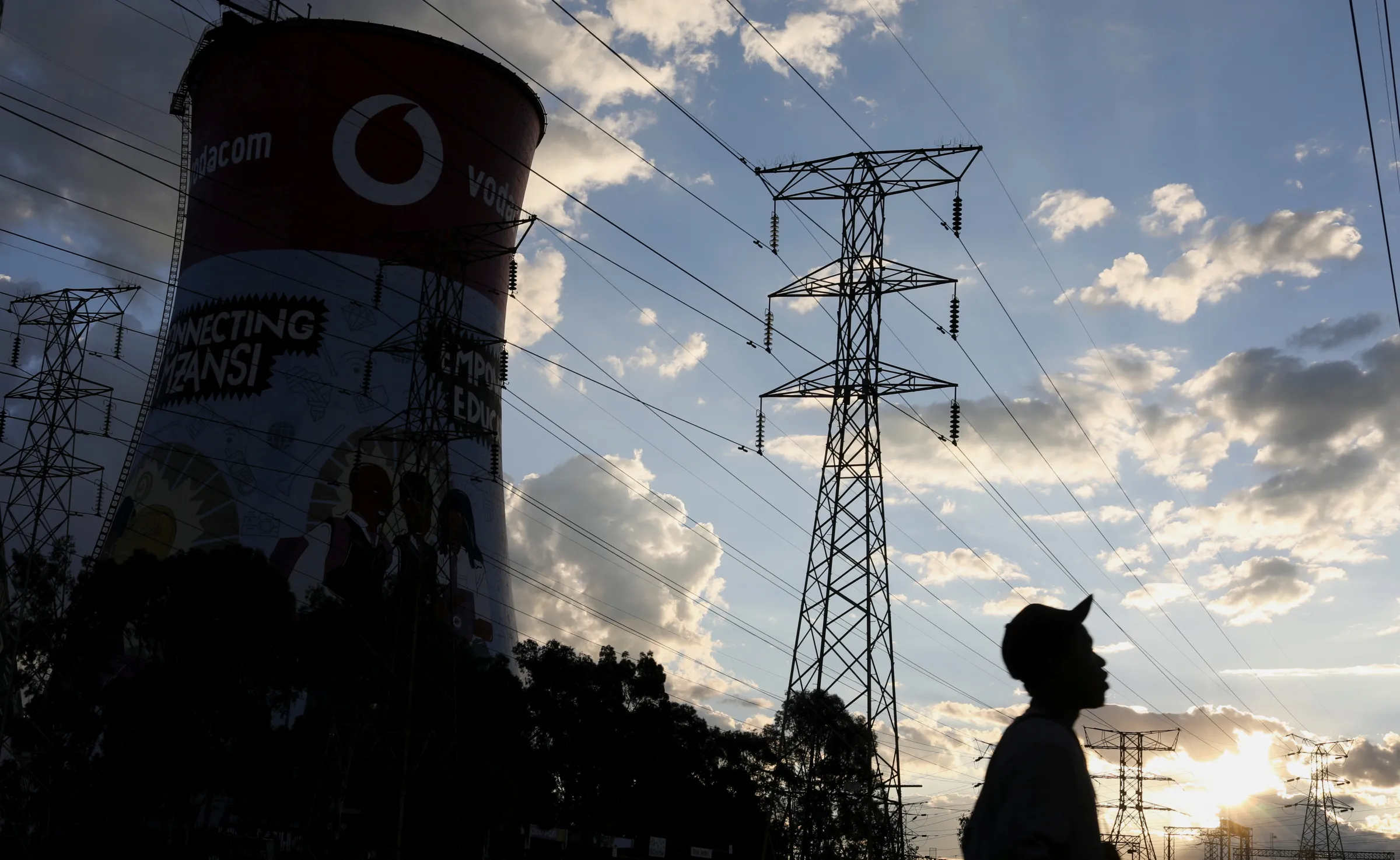USAID cuts hurt debated energy plans in Africa

A man walks below Eskom's electricity pylons in Soweto, South Africa, March 18, 2021. REUTERS/Siphiwe Sibeko
What’s the context?
Africa's renewable energy push slowed by Trump's USAID funding cuts to power projects.
- U.S. funding cuts slash Africa energy plans
- Critics say energy success stories exaggerated
- Questions around energy funding void
JOHANNESBURG - The U.S. aid funding cuts have sent high-profile shockwaves across world health care access and humanitarian relief efforts, but another vital sector has also been hit: energy access in Africa.
On a continent where 600 million people lack reliable access to electricity, the U.S.-led Power Africa initiative sought to improve power supplies in sub-Saharan Africa for schools, clinics, households, farms and businesses.
How have President Donald Trump's funding cuts impacted this energy initiative?
What was Power Africa?
Power Africa was launched in 2013 by President Barack Obama with the aim of boosting affordable and sustainable energy access in sub-Saharan Africa.
It called for partnerships with governments, the private sector and multilateral organisations like the African Development Bank (AfDB) to fund a mix of energy projects from wind farms in Senegal to mini-grids in Nigeria.
Power Africa's goal was to "add at least 30,000 megawatts (MW) of affordable and reliable electricity generation capacity and 60 million connections by 2030," according to its LinkedIn profile.
Power Africa was operated under the U.S. government's relief provider USAID, which was dismantled by the Trump administration earlier in the year. It is one of many health and humanitarian programmes slashed by billionaire Elon Musk's Department of Government Efficiency to cut federal spending.
Its website no longer functions, much like other USAID-funded initiatives.
Almost all of Power Africa's programmes have been terminated and the majority of its staff fired, according to reports from Africa-focused consulting firm SBM Intelligence and Bloomberg News.
Power Africa's employees were sent termination notices in early February, according to a source at the programme who asked not to be named for fear of government reprisal.
How have USAID cuts impacted Power Africa projects?
Power Africa has received US$1.2 billion from the U.S. government since its inception in 2013, allowing it to fund more than 150 energy projects and help generate 15,498 MW of power for 216 million people in Africa, according to the Centre for Global Development, a think tank.
According to a Power Africa document seen by Context, the programme has raised nearly US$27 billion from the U.S. government and partner investments for 164 power projects since 2013.
Once all these projects are operational, they will generate 15,498 MW to power over 44.8 million households and businesses, it said. So far, 9,000 MW of "new, affordable and reliable electricity are already online," the document said.
The U.S. Inspector General wrote a report in 2019 questioning the programme's alleged success, saying data collection was inconsistent, future projects were wrongly listed as complete and hand-held solar lanterns, not grid connections, were cited as new electricity connections.
NJ Ayuk, Executive Chairman at the African Energy Chamber, wrote on LinkedIn that the programme bypassed oil and natural gas projects, did not spend on renewables and spent most of its money on U.S. consultants while paying Africans "peanuts."
When asked by Context about the criticisms, the Power Africa source said that a much more rigorous verification process was developed following the 2019 report.
In response to the criticisms about the programmes' focus areas and slow progress, the source said many deals had reached financial close and were in the process of being completed.
The source added that Power Africa listed partnerships as part of its success stories and that some critics saw this as an exaggeration because they expected the programme to fully fund energy projects.
What does this mean for Africa's energy future?
While it is difficult to say whether the Power Africa funding gap will be filled and by whom, questions have been raised about what this means for renewable energy on the continent amid the growing climate crisis.
The United States withdrew funding in March from the Just Energy Transition Partnerships - a plan to help major global polluters move away from coal in locations that included South Africa and Senegal.
While Power Africa invested in both fossil fuels and clean energy, the latter is estimated to have contributed to cutting 45 million tons of carbon emissions, according to the Centre for Global Development.
Some Power Africa projects may continue under different government agencies, although details are still unclear, according to SBM Intelligence.
Power Africa's partners, which included the AfDB, private sector and various African governments, could attempt to fill the funding void, energy experts predict.
This article was updated on Thursday April 24, 2025 at 11:00 GMT, to include the latest developments.
(Reporting by Kim Harrisberg; Editing by Ellen Wulfhorst and Ana Nicolaci da Costa.)
Context is powered by the Thomson Reuters Foundation Newsroom.
Our Standards: Thomson Reuters Trust Principles
Tags
- Clean power
- Adaptation
- Government aid
- Fossil fuels
- Net-zero


















